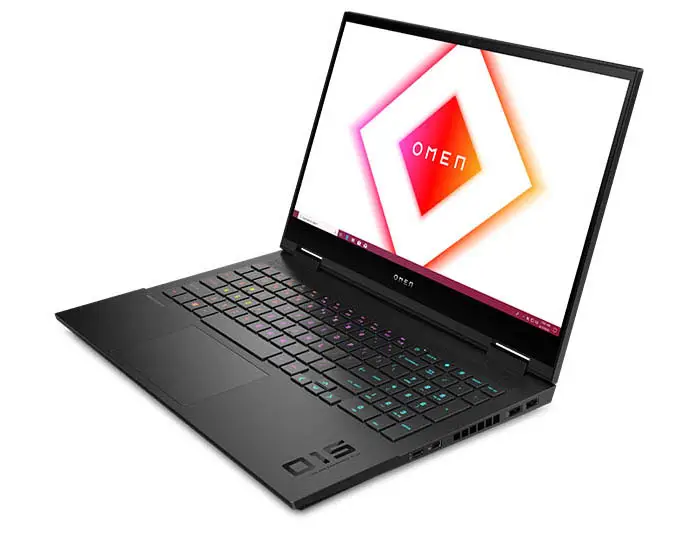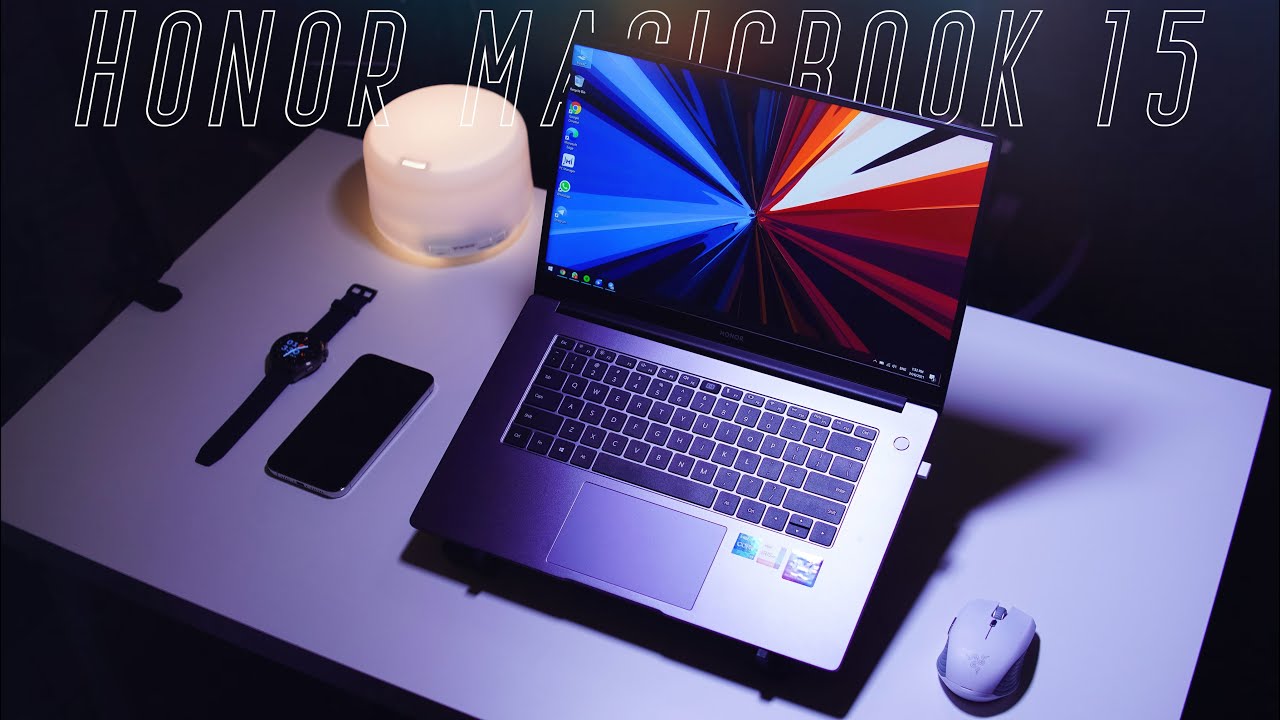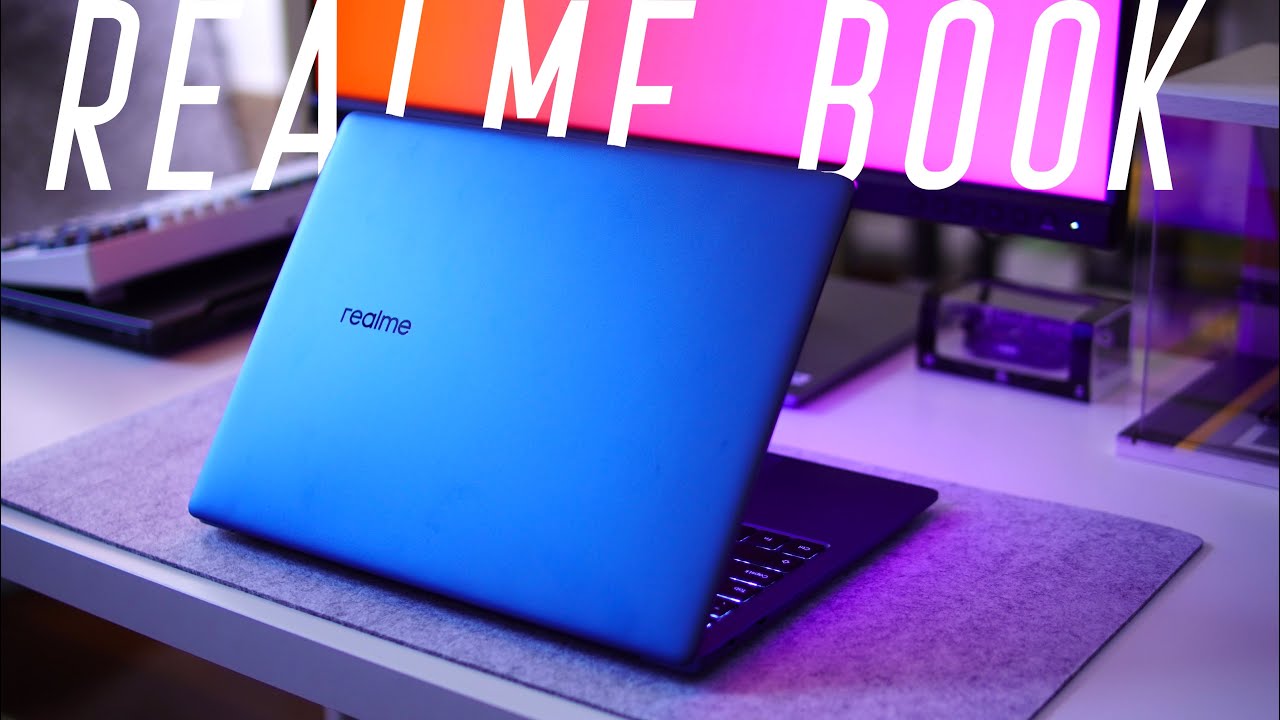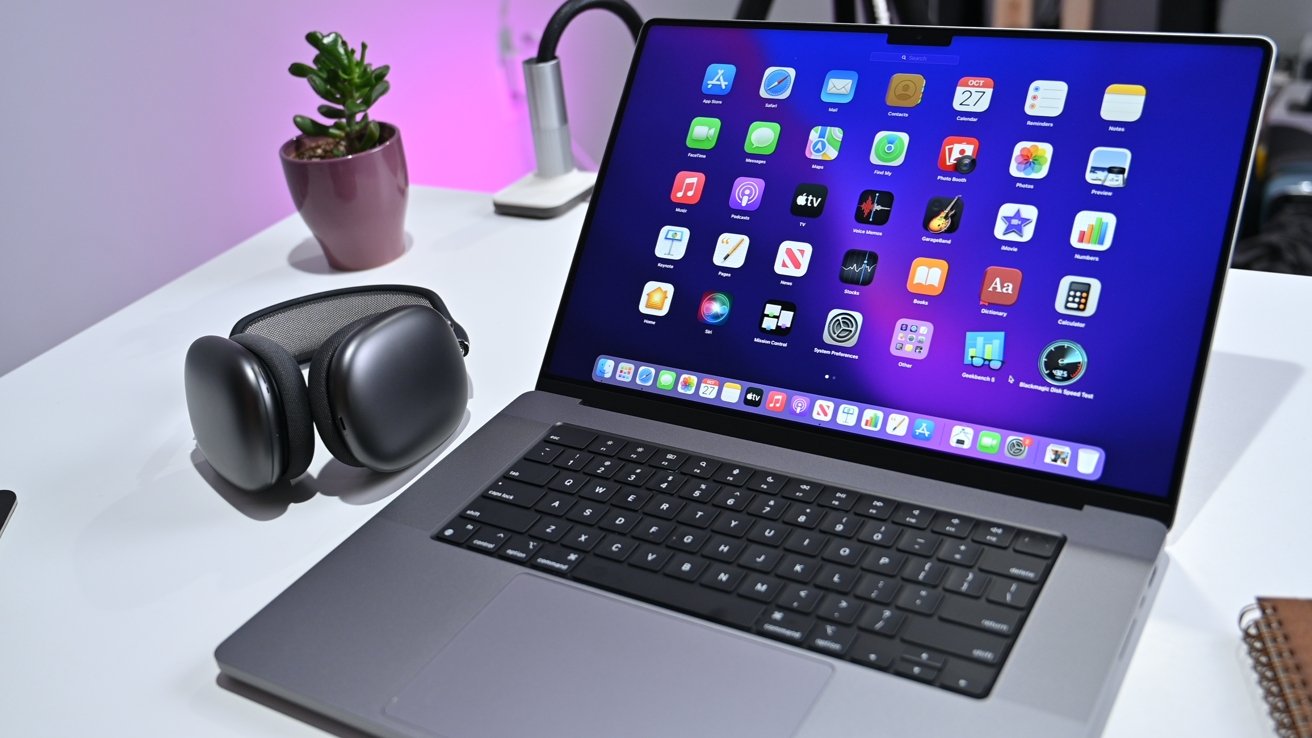
Is it worth considering the lower specced HP Omen 15, or should you spend more money and upgrade to the higher tier model? I’ve compared both laptops to show you all the differences and find out. Both laptops are essentially the same, the key differences are in the specs. The lower end model has a 6 core Ryzen 5 5600H CPU and Nvidia RTX 3060 graphics, while the higher end configuration has an 8 core Ryzen 7 5800H CPU and Nvidia RTX 3070 graphics. These are the differences between the processors, so the major difference is that Ryzen 7 has two extra cores compared to Ryzen 5.
The 5800H also has a higher maximum boost clock and a little extra cache. Now these are the differences between the graphics. The 3070 has 2 gigs of extra VRAM and 33% more CUDA cores. It’s also got a higher power limit range, however both the 3060 and 3070 in HP’s Omen 15 have the same 100 watt power limit. As for the price differences, the lower specced Omen 15 starts at $1120 USD, and it costs $340 or 30% more money to upgrade to Ryzen 7 and the 3070, so let’s find out if the extra cost is worth it.
Both laptops are the same with regards to build quality and design, literally all that’s different here is the CPU and GPU – oh and the screens.
Both laptops have 15.6” 1080p 144Hz screens, however the higher spec model came with an AUO panel while the lower spec model came with an LG panel. The color gamut and brightness wasn’t too different, within margin of error, and the screen response times were super close together too, so I suppose you could potentially get either panel in your Omen 15 and expect them to do about the same. The total system latency is about the same too, this is the amount of time between a mouse click and gun shot fire in CS:GO, though both were on the lower side compared to alternatives.
Next let’s talk about battery life. Both of my Omen laptops had the same size 70.9Wh battery, however the Omen is also available with a lower 52.5Wh capacity option. With the same larger size battery, the lower specced model was lasting a little longer as expected, just 5 minutes more while running a game and both were around the 2 hour mark which is above average.
Outside of gaming in the YouTube playback test the higher specced config was still lasting for about 8 and a half hours, while the lower spec one was pushing beyond 9 hours. I guess lower specs equals less power draw. Let’s check out thermals next before we get into the games. Both laptops appear to have the exact same cooling solution inside, two fans and heat pipes shared between CPU and GPU. These are the temperatures for both laptops, tested at different times but in the same ambient room temperature.
I’ve got the idle results down the bottom, and the lower specced model was a little warmer here, while the rest of the tests were done with CPU plus GPU stress tests to represent a worst case workload. With both running in the lower balanced mode, the lower spec model was again a little warmer. Stepping up to the higher performance mode, again the higher spec model was cooler, well at least for the CPU, its GPU was a little warmer now but not by much.
Both were also able to get a little cooler with the cooling pad I use, link is in the description below. I’m thinking the lower spec model might be reaching higher temperatures because it’s hitting higher clock speeds, both for the CPU and GPU.
Technically 6 cores should be able to clock higher than 8 with the same power applied, as there’s just less to power, so that makes sense. The GPU could also be clocking higher if dynamic boost has more power available if it’s not being used by the processor, and again 6 cores is less to power. Sure enough in balanced mode at least, the lower spec model is using less power for the CPU, as per the blue bars, but getting more power for the GPU in the green bars. The same is also true in the higher performance mode, but it’s only like a one watt or so difference in either direction. In Cinebench R23, a CPU only workload with the GPU now idle, the Ryzen 7 5800H was able to reach a 30% higher multicore score, which is expected given that it has 33% more cores compared to the 5600H.
The boost to the single core score on the other hand was lower at just 6% with the 5800H compared to the 5600H. They both lose performance when running on battery power, however the 5800H now has a smaller 19% lead. Still a decent difference, but it would appear that without wall power the 8 core chip loses more performance, which again makes sense as more cores need more power. Both felt cool to the touch when just sitting there idle, low 30 degrees Celsius is a normal result. There’s only a negligible difference when running the stress tests in the lower balanced mode, then with the highest performance mode, which ran the fans at maximum, the lower specced model was a few degrees cooler in the middle hot spot.
Let’s listen to the fan noise. The lower spec model was a little more audible when idling, otherwise the fan noise was pretty equivalent when under load. Now let’s find out how well both laptops compare in 11 different games. Let’s start out with Red Dead Redemption 2. I’ve got the higher specced Ryzen 7 plus 3070 model shown by the purple bars, and the lower specced Ryzen 5 plus 3060 model shown by the red bars.
I’ve also tested all available setting presets which are listed on the left with lowest down the bottom and highest up the top. In this case the higher specced Omen 15 was reaching 22% higher average FPS at max settings, one of the better results. Cyberpunk 2077 had some interesting results. There’s almost no change at low settings, then at ultra settings the higher specced config was almost 9% higher in terms of average FPS, but check out the ray tracing results with DLSS set to quality near the top, even the 1% low from the higher specced model was well above the average FPS from the lower spec, so maybe the higher spec hardware for RT and DLSS with the 3070 helps out here.
Watch Dogs Legion had the biggest difference between the two laptops at max settings out of all 11 games tested, with the higher specced configuration reaching 29% higher average FPS compared to the lower spec.
Again in this case even the 1% low from the higher end machine was ahead of the average FPS from the lower specced model. It’s not all massive gains though, Rainbow Six Siege only had a 5% boost to average FPS at max settings, and although the gain to 1% low was higher at 14%, the lower specced model still had a 1% low above the screen’s 144Hz refresh rate, so it’s not going to be a problem at all. Likewise CS:GO, another esports title, saw equally small gains with the higher end Omen 15, just a 5% boost to average FPS.
Fortnite on the other hand had some of the biggest differences at max settings. The higher specced Omen was 25% faster than the lower specced model, at least in terms of average FPS, we can see the difference in 1% lows is quite small regardless of setting level, and then at low settings average FPS changes are extremely minor, matching what we saw in other games.
Control was tested with both ray tracing and DLSS, but let’s start with both disabled, so stock gameplay. With just stock gameplay the higher specced Omen 15 was reaching 14% higher average FPS over the lower specced model, and like other games the gap was smaller at lower setting presets. The percentage difference hardly changes much when enabling ray tracing, but the performance lowers significantly. That’s where DLSS comes in to boost performance, again not massive gaps and realistically the lower specced model is still running the game perfectly fine here even at max settings. I was hopeful we’d see a bigger difference like in cyberpunk with RT and DLSS, but that wasn’t the case.
Assassin’s Creed Valhalla is a game that I’ve gotten back into lately with the new DLC, but the differences with the higher specced laptop were below average out of the games tested, with just a 5 FPS boost or 8% gain at max settings, again with smaller differences at lower setting levels. The differences in Shadow of the Tomb Raider were also below average, same results at lowest settings then just an 8% gain in favor of the higher specced Omen at max settings. Battlefield V is another older title these days, and again just a smaller 7% boost to average FPS at max settings with the higher specced Omen here, with smaller differences noted at lower settings. Similar deal in The Witcher 3 again, no real change at lower settings, then a bigger gap at the highest ultra setting preset where the higher spec Omen was reaching 17% higher average FPS. On average out of these 11 games tested, at the highest setting preset at 1080p the higher specced Omen 15 was 13.
5% faster than the lower specced Omen 15. Some of the esports titles hardly saw any change, while more demanding titles could benefit more from the spec bump.
I suspect the difference could be larger at 1440p, as the extra VRAM with the 3070 might come into play, but alas, both of my machines came with a 1080p screen. If we instead compare with all games set to the lowest setting preset, well the higher spec model is only 5% faster on average, with only big gains still noted in Red Dead Redemption 2 and Watch Dogs Legion, otherwise the differences are quite small, so you’re only really going to want to consider spending more for the higher end model if you’re gaming at higher settings, which to be fair you’d probably be doing with a 3060 or above anyway. From a cost per frame perspective, well the cheaper configuration is offering better value.
It’s obviously cheaper, but the performance gains from the higher spec model cost more to obtain, so in other words the 5600H plus 3060 model is a better deal, at least at the stock pricing, sales will of course change this.
Perhaps the difference would be greater if we were comparing full wattage 3060s and 3070s, as the max power limit of the 3070 can technically go higher compared to the 3060 based on Nvidia’s spec, it just so happens that HP decided to limit both in the Omen 15 to 100 watts. Plus there’s also no doubt that both are being held back because they can’t disable optimus. I’ve heard that the Intel models of the Omen 15 do have a MUX switch and let you disable optimus, so it’s pretty strange that the Ryzen models don’t have this for some reason.
But regardless, both laptops can get a speed boost by connecting an external screen to any of the display ports, as these all connect directly to the Nvidia GPU bypassing the integrated graphics and optimus.
I’ve got the 5600H plus 3060 configuration highlighted by the red bars, and the higher tier 5800H plus 3070 configuration highlighted by the green bars. In this particular game, the higher spec laptop was just 1 FPS ahead of the lower spec model with an external screen, while the higher spec model is able to get a nice further boost. Now for some content creator workloads. Adobe Premiere was tested with the Puget Systems benchmark, and both laptops are highlighted in red. The higher specced Omen was scoring just 8% above the lower specced Omen, so not really a significant difference considering the hardware changes.
The differences are even smaller in the Adobe Photoshop test. I believe this test relies on single core performance, and like we saw earlier in Cinebench, the change there is certainly less compared to multicore performance. There’s a larger 15% gain in DaVinci Resolve with the higher tier model. This test typically depends more on the GPU, and despite both having the same power limit, the 3070 seems to be helping out more compared to the other creator tests.
Both of my laptops came with a 1TB NVMe M.
2 SSD but from different brands. I found the writes on the higher spec model to be better, while the reads were ahead on the lower spec model, not much to complain about in either case, but this may vary by region as it depends on what drives they use. So those are the main differences, again the higher specced Omen 15 is $340 more compared to the lower spec model which is about 30% more money. It kind of sounds worth it when you consider that going from 6 to 8 CPU cores is a 33% increase. Likewise, the difference of going from 6 gigs of VRAM in the 3060 to 8 gigs of VRAM in the 3070 is also a 33% increase and the 3070 also has 33% more CUDA cores compared to the 3060.
So I guess on paper it kind of sounds like you’re getting what you’re paying for, but as we’ve seen that’s generally not the case when looking at the actual performance.
In multithreaded CPU tests that can actually take advantage of the extra cores it would be worth it, but in most games and applications the 5600H and 3060 seem to be plenty. Basically if you’re just doing 1080p gaming I think the 3060 and 5600H is perfectly adequate. It’s still going to play pretty much any modern game at high settings no problem. I suppose there’s a futureproofing argument in favor of the 3070 and 5800H but I always say just buy what you can afford today.
If you’re perfectly fine to spend the extra three or four hundred dollars to get the higher spec model then yeah I’d probably just do it if it’s something you’re going to be using for like 3 plus years anyway. I guess just don’t feel obligated to get the higher spec model if you can only afford the lower spec one. So with all of that in mind, let me know which of these two Omen 15 configurations you’d pick down in the comments below.
You can check out my full review on the Omen 15 over here if you need even more information as I go into far more depth in that one. I’ve only covered the differences in this video rather than talking about absolutely everything.
Get subscribed if you’re new to the channel for future laptop comparisons like this one, and come and join me in Discord and get behind the scenes videos by supporting the channel on Patreon..
Read More: Alienware m15 R6 – A BEAST in Games, BUT…


